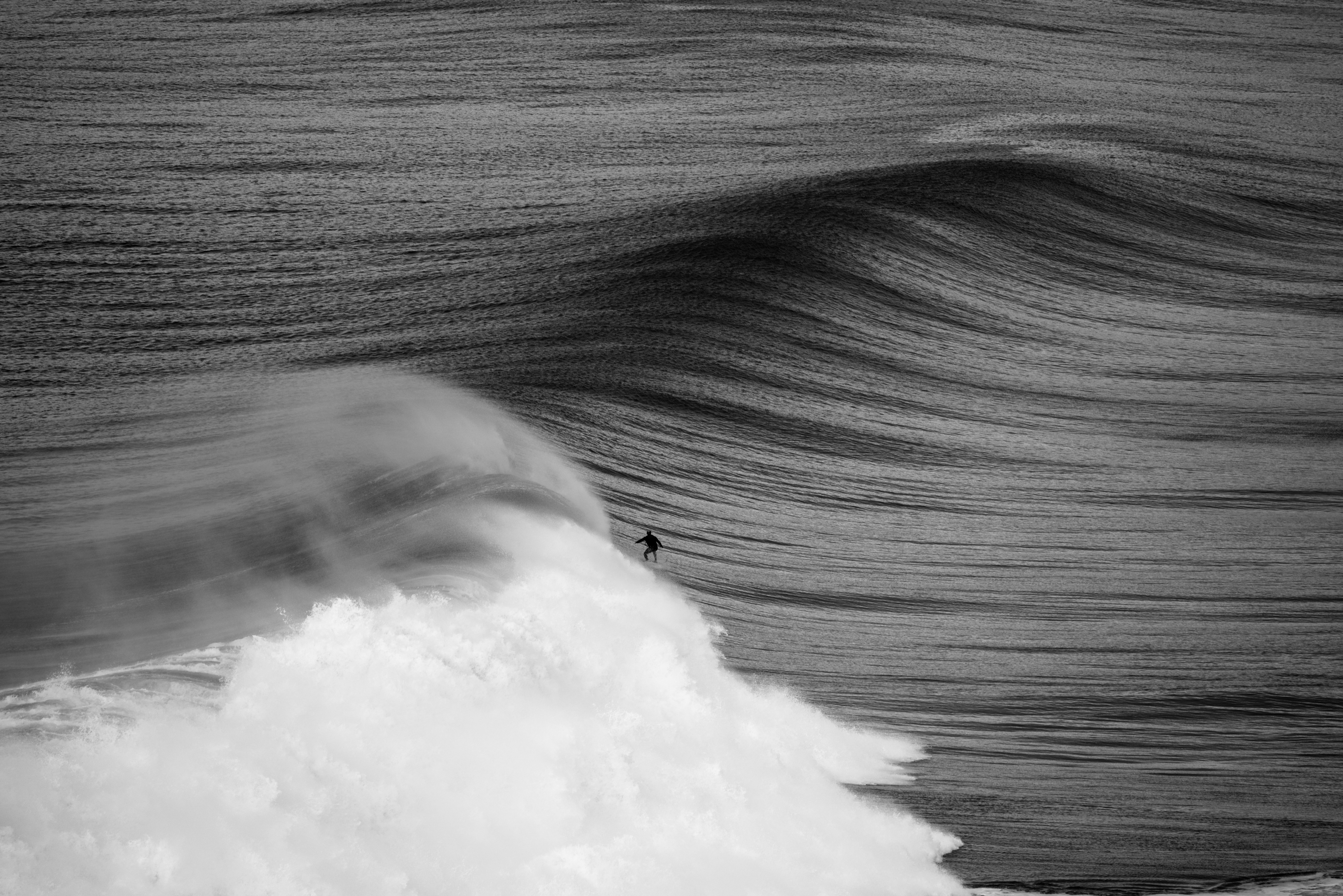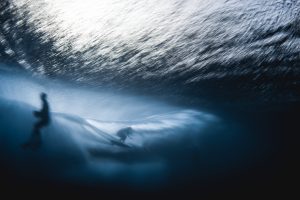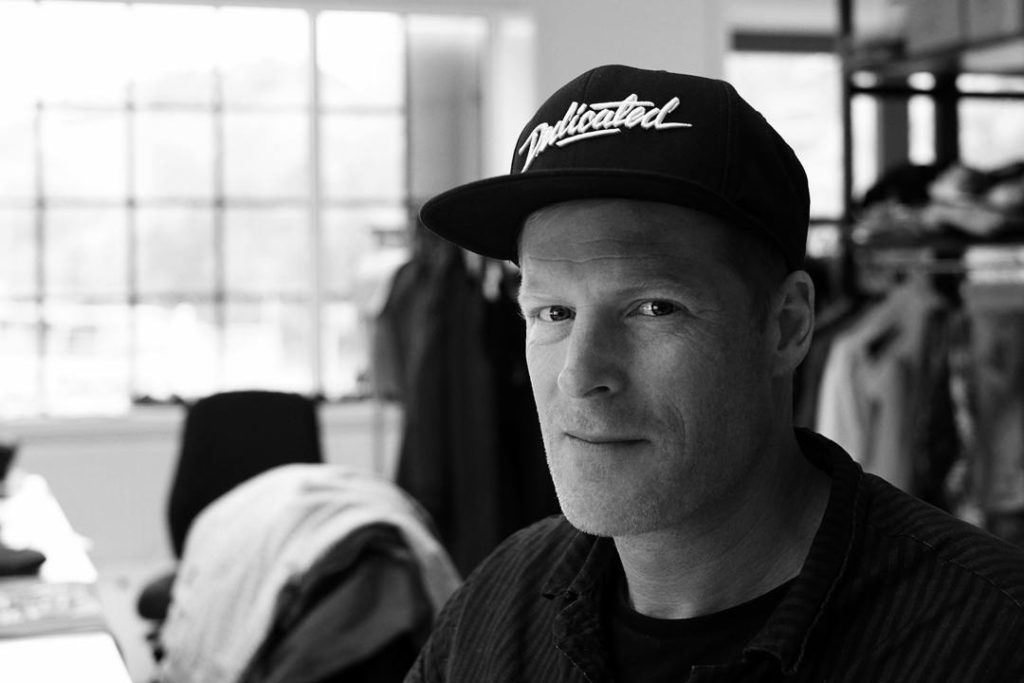When Australian photographer Luke Shadbolt discovered his passion for the ocean, he decided to share it with the world. During his travels between remote natural areas and densely populated environments, he gained an insight into the fundamental human-nature connection. Through his works he seeks to demonstrate the fascinating interaction of man with his environment in a physical, sociological and evolutionary context, hoping to shed light on the often overlooked ecological problems.
How did you enter your field/begin as an artist?
Luke Shadbolt: I’ve always leant more on the utility side of the form/function thought, which lead me to question the validity of a career in the creative industries. I didn’t think artist was an actual career possibility, I didn’t even know there was a creative industry, to begin with. I finished high school and had no idea what I wanted to do, so I did a year of arts at university and really enjoyed the graphic design classes. I transferred to visual communication and in that course experimented with photography, which reignited my interest in image making.
According to you, what makes “good” art?
L.S.: Like any good relationship, there needs to be a spark or physical attraction, but it can’t all be on the surface. I think the best art offers a layered story, personal exploration is a portrayal of time or place and it is aesthetically pleasing.
How would you describe your art/photography to the viewer?
L.S.: I’d say past works are an exploration of the duality of nature, both physical and qualitative, with a focus on landscape. I’m working on a few different concepts that will (hopefully) expand upon this.
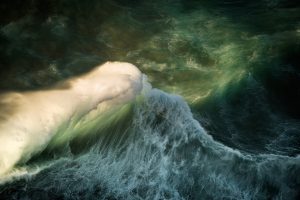
IN THE PHOTO: Maelstrom 2, 2016. PHOTO CREDIT: Luke Shadbolt
What would you cite as your inspirations behind your work?
L.S.: The environment, human nature, duality and balance, everyday life and trying to understand it. As far as people I look up to, there is just a constant stream of visual stimulation all around us and it’s just constantly changing where I find inspiration from. You could ask me this question every day and I would give you a different answer but if I had to name three people that inspire me, today I would say: William Turner, Thom Yorke and Monet.
What would you say is your favourite piece of your own work and why? Include images, please.
L.S.: I think the piece I connect most with is an image of the beach I grew up surfing, of a once in a lifetime swell I had the fortune of witnessing in 2016. I have a tendency to dislike most of my work once I’ve looked at it more than a handful of times, but I think because I have such a connection to the location, and the history of this swell; knowing that it doesn’t happen often… It’s an image I can look at every day and it always brings a smile to my face.
I had to name three people that inspire me, today I would say: William Turner, Thom Yorke and Monet.
IN THE PHOTO: Maelstrom 4, 2016. PHOTO CREDIT: Luke Shadbolt
Could you walk us through your process? How does a work of art go from idea to execution?
L.S.: I would love to have a formal structure of the working process, but my life is very far from structured in every sense. I tend to work sporadically on projects at completely random times. I tend to start with a concept and an idea of where I think it will end up, then through the process of experimentation and discovery the idea usually takes on a completely different form and I end up somewhere new altogether. I do enjoy working this way, because it means I’m learning about why I do what I do as I go.
What kind of narratives or stories do you like to convey through your photography?
L.S.: The main narrative I’ve looked at up to this point is centred around understanding nature, our (humanity’s) connection to nature, our connection to each other, beauty, chaos and the duality within these concepts. 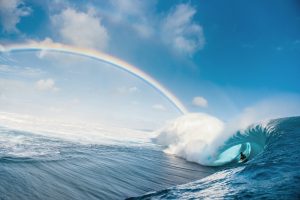
IN THE PHOTO: Surfer. PHOTO CREDIT: Luke Shadbolt
What are your favorite subjects and locations?
L.S.: My favourite subject is the ocean, water, in particular. Although actually, I’d say nature, in general. I like working outside where possible. Even though conditions can work against you, there is such great opportunity in the unexpected.
Could you tell us about the craziest adventure you’ve faced while working?
L.S.: I’ve been driven off the road in the middle of the desert by a drugged out man who thought I had his girlfriend in the trunk of our car. I’ve been arrested on suspicion of terrorism. I’ve nearly walked off the edge of an active volcano in the middle of the night, swum with sharks, been swept out to the sea, trapped in a cave with a rising tide fully clothed and hung out of open helicopters. So many great memories. The most intense situations often leave the most lasting impression.
I’ve nearly walked off the edge of an active volcano in the middle of the night, swum with sharks, been swept out to the sea, trapped in a cave with a rising tide fully clothed and hung out of open helicopters.
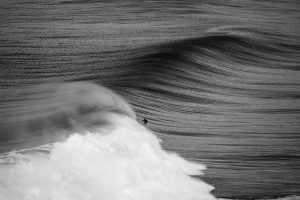
IN THE PHOTO: North Avoca, 2016. PHOTO CREDIT: Luke Shadbolt
How do you think your work impacts the world?
L.S.: We tend to only care about things that we directly experience, which is just human nature. I’d like to think my work illustrates an aspect of nature that most people would never have the chance to experience in person and offers an appreciation for this planet that would otherwise go unnoticed.
What are the various challenges you face?
L.S.: Time management is the biggest challenge. There just aren’t enough hours in the day.
So what does the future hold for you: what is next?
L.S.: I’m experimenting with incorporating a technological element into my work, while at the same time bringing in a nostalgic element. It’s hard to elaborate any further, as I’m not sure how successful it will be but it’s this part of the process that I like the most: trial and error.
IN THE PHOTO: Surfer. PHOTO CREDIT: Luke Shadbolt
Finally, do you follow any philanthropic cause? How do you see it impacting our world?
L.S.: I’m a member of a not-for-profit called “Take 3 for the Sea”, which is about reducing the amount of waste that you produce in everyday life, but especially anything that can end up in our waterways. I’m also a supporter of the parley.tv organization, who also aims to clean up the ocean.


